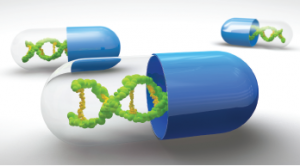
Festa / SHUTTERSTOCK.COM
SAN DIEGO—An increasing number of patients is being identified with deficiency of adenosine deaminase type 2 (DADA2); fortunately, researchers and clinicians continue to better understand the genetic disease as well, experts said in a session at the 2017 ACR/ARHP Annual Meeting Nov. 3–8.
The childhood-onset disease involves loss-of-function mutations to the CECR1 gene (i.e., cat eye syndrome critical region candidate 1), which encodes the enzyme adenosine deaminase 2 (ADA2), the growth factor-like function of which seems to play the biggest role in the disease. Symptoms include fevers, early onset of strokes, vasculitis and livedo racemosa. Cat eye syndrome is not the same as DADA2.
Paul Brogan, MBChB, PhD, professor of rheumatology at University College London (UCL) in London, England, described a disease that doesn’t fit neatly into a box. It gives rise to autoinflammatory features, autoimmune features and immunodeficiency. Autoinflammation and vasculitis arises because monocytes have impaired differentiation toward anti-inflammatory M2 macrophages and skew toward the pro-inflammatory M1 variety. And, there’s an upregulation of neutrophil-related genes. The disease also involves an immunodeficiency aspect, with reduced memory B cells and increased B cell mortality.
The differential diagnosis is wide ranging, spanning any type of sporadic vasculitis, other monogenic autoinflammatory diseases such as STING-associated vasculopathy with onset in infancy (SAVI) and chronic atypical neutrophilic dermatosis with lipodystrophy and elevated temperature (CANDLE), immunodeficiency, marrow failure and Castleman’s disease.
Clinicians should consider screening for DADA2 in cases of early-onset polyarteritis nodosa (PAN), familial PAN, PAN with cutaneous and neurological involvement or when PAN resists conventional therapy, Dr. Brogan said.
There have been no formal trials yet for DADA2 treatment, Dr. Brogan said. Doctors use corticosteroids in virtually all patients, but he says it’s not a good long-term option.
“There’s a growing consensus that anti-TNF is the preferred treatment for auto-inflammation vasculitis,” he said. “But in whom and when to start the treatment, particularly for patients who have minimal symptoms, remain controversial and a point for discussion.”
Allogeneic hematopoietic stem cell transplantation has produced encouraging results. Researchers reported results last year from 14 patients who’d had bone marrow dysfunction or immunodeficiency in the United States and five European countries. At a median of 18 months of follow-up (ranging from five months to 13 years), all of the patients remained alive and doing well, with no new vascular events, and resolution of their marrow failure and immunodeficiency.1
But Dr. Brogan pointed out the potential problems of post-transplant hematological autoimmunity, acute graft vs. host disease and other complications. And in his lab, work is afoot to develop gene therapy for the disease, he said. At least on a theoretical basis, he said, “… it should be possible. This is a recessive monogenic disease. And that correction for a single gene should restore the ADA2 enzyme activity and cure the problem.”


